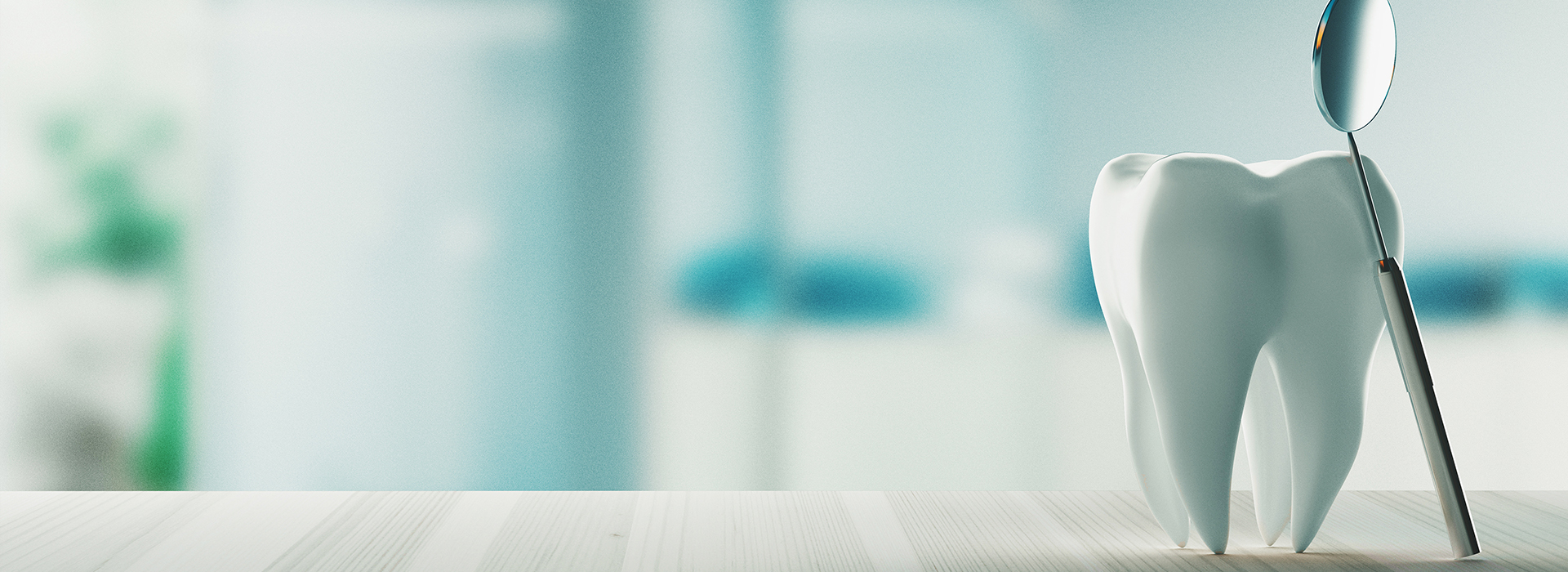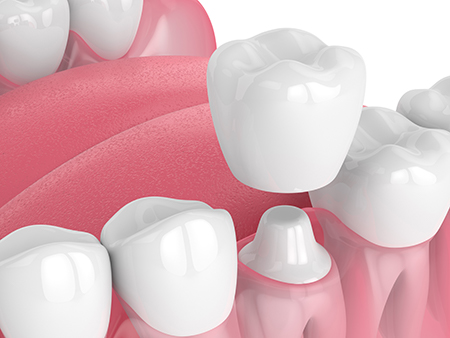
At Callahan Family Dentistry, our goal is to blend durable dental solutions with natural-looking results. Ceramic crowns are one of the most versatile restorative treatments available today — they repair function, protect tooth structure, and deliver an aesthetic outcome that can be tailored to each patient’s smile.
We approach every crown case with careful planning: assessing bite dynamics, neighboring teeth, and the long-term health of the tooth beneath. Our priority is to recommend the option that preserves as much natural structure as possible while restoring comfort, chewing ability, and appearance.
A crown is recommended when a tooth has lost too much structure for a filling to be a dependable solution. This can happen after large cavities, fractures, repeated repairs, or when a tooth has been weakened by previous dental work. Crowns fully encase the visible portion of the tooth, restoring strength and protecting the remaining enamel from further damage.
Teeth that have undergone root canal therapy or serve as anchors for bridges and implant restorations often benefit from full-coverage protection. In these situations, a crown reduces the risk of fracture and helps maintain predictable long-term function. A crown can also improve the bite relationship when a tooth’s shape or height interferes with comfortable chewing.
Beyond mechanical strength, crowns are chosen for cosmetic reasons as well. A badly stained, misshapen, or uneven tooth can be reshaped and color-matched with a ceramic crown to blend seamlessly with adjacent teeth. The decision to place a crown is always personalized: we weigh the tooth’s health, functional needs, and aesthetic goals before recommending treatment.

All-ceramic crowns are fabricated from contemporary dental ceramics that mimic the way natural teeth reflect and transmit light. That translucency produces a lifelike appearance that is especially valuable for front teeth and any smile that will be noticed. These materials no longer trade off durability for beauty — modern ceramics offer both.
Because ceramic restorations are metal-free, they avoid the dark margins that can appear at the gumline with older crown designs. They are also biocompatible with soft tissues, which can help promote healthy contours around the restored tooth. For patients with metal sensitivities, an all-ceramic crown is a practical, allergy-friendly alternative.
Another advantage of today’s ceramics is conservation. Many newer materials allow for a thinner restoration while still providing excellent strength, meaning less tooth reduction may be necessary to achieve a stable, esthetic result. This conservative approach helps preserve natural tooth structure whenever possible.

Not all ceramic crowns are identical; different materials are optimized for specific clinical needs. For highly visible front teeth, translucent ceramics that closely reproduce enamel characteristics are often favored. For posterior teeth that endure heavier chewing forces, stronger formulations such as zirconia are commonly selected to resist fracture and wear.
Material selection depends on several factors: tooth position, bite dynamics, the quantity of remaining tooth structure, and the overall cosmetic demands of the case. We evaluate each of these elements and explain the material choices so patients understand why a certain ceramic is recommended for their situation.
Our laboratory partners and in-house processes allow for precise shade-matching and surface characterization, ensuring crowns integrate with a patient’s smile. Whether the goal is invisibility in the esthetic zone or long-term durability in the back of the mouth, the right ceramic material makes a significant difference in outcome and satisfaction.

The process of receiving a ceramic crown begins with a careful examination and diagnostic imaging when needed. We will discuss the treatment sequence so you know what to expect, from preparing the tooth to creating impressions or digital scans, and placing a temporary restoration while the final crown is fabricated.
Preparation involves shaping the tooth to create space for the crown while conserving as much healthy structure as possible. With modern digital workflows, impressions are often captured with comfortable intraoral scanning, which streamlines communication with the lab and enhances precision. Once the permanent crown is ready, we check fit, color, and bite before placing it with a secure adhesive or cement.
Post-placement care centers on routine oral hygiene and periodic evaluations. Proper brushing, flossing, and regular dental visits help extend the service life of a crown. If grinding or clenching contributed to the original damage, we may discuss protective strategies such as night guards to minimize future stress on both the restoration and the natural teeth.
At Callahan Family Dentistry, we combine conservative restorative philosophy with contemporary materials and laboratory craftsmanship. Our focus is always on solutions that preserve tooth structure, support oral health, and create predictable esthetic results. We tailor every plan to the individual patient rather than using a one-size-fits-all approach.
Communication is a central part of our process: before any treatment is performed, we review options, describe the benefits and limitations of each material, and answer questions so patients can make informed decisions. This collaborative model helps ensure that the chosen restoration aligns with both functional needs and cosmetic expectations.
We also emphasize long-term maintenance. After a crown is placed, ongoing preventive care and monitoring help maintain the restoration and the surrounding tissues. Our team provides guidance on home care and will schedule follow-up appointments to review the crown’s integration and performance over time.
Summary: Ceramic crowns are a dependable way to restore strength, protect compromised teeth, and achieve natural-looking aesthetics. If you’d like to learn more about how a ceramic crown could fit into your treatment plan, please contact us for additional information or to arrange a consultation.
While a dental filling is designed to replace a portion of a decayed or damaged tooth, a dental crown offers full coverage to restore the tooth’s entire outer surface. A well-fitting dental crown not only protects and strengthens the underlying tooth structure, but it also restores the tooth’s appearance and function.
The procedure for getting an all-ceramic crown is much like the procedure for getting any other type of crown. In all cases, the tooth needs to be prepared, an impression taken, and a permanent crown cemented into place. A single all-ceramic crown can typically be fabricated over the course of two visits. With this approach, a temporary crown is typically worn until the second visit, when the permanent restoration is placed. As with every treatment plan, our office will explain your best options in care.
As the name implies, a temporary crown is only worn for a short time until the permanent crown is placed. A temporary crown is typically fabricated from durable tooth-colored dental acrylics. While designed to protect the underlying tooth between appointments, and until your new permanent crown gets placed, a temporary crown is also fabricated to look like a natural tooth and maintain the look of your smile.
While you should feel better having an attractive and functional tooth to restore your smile, your tooth may feel a little sensitive following treatment. This initial sensitivity will subside. We take great care to make sure your new restoration looks great, fits well, and your bite is perfect. However, we’re always happy to make any minor adjustments to ensure your comfort.
With some exceptions, teeth with root canal procedures are typically restored and protected from further damage with a full-coverage crown. Based on what’s best for your smile, our office will recommend the most appropriate restoration to maintain the health and longevity of your tooth following a root canal procedure.
A dental crown is a long-term restoration that, if properly cared for, can serve you well for many years to come. Once your new crown is placed, it requires the same brushing, flossing, and periodic checkups as your natural teeth. Avoid biting your fingernails and chewing on hard or sticky objects such as ice, pencils, or taffy, which can damage or loosen your crown. Remember, clenching and grinding your teeth puts excessive pressure on both natural teeth and dental restorations. Unless treated, this habit can compromise the longevity and integrity of your dental work, including crowns.
Although your new all-ceramic crown restores the tooth's strength, form, and function, you can still develop dental disease in the absence of proper care. To prevent gum disease and tooth decay, it’s essential to brush and floss as instructed and see our office for routine checkups, cleanings, and care.
How long a dental crown lasts depends on various factors, including your level of oral care, diet, and oral habits. While the standard answer is that dental crowns can last anywhere from 5 to 15 years, existing literature confirms that most dental crowns remain in place at 15 to 20 years.
At the office of Callahan Family Dentistry, we strive to provide the highest quality of care to address all your dental needs. Once we’ve had the opportunity to examine your smile, we can give you a clear picture of any dental issues that are present, along with a quote for how much treatment will be. The cost of dental crowns can vary a little, depending on the type of crown and its location. Our goals are to provide the highest quality of care and help patients begin treatment without additional financial stress or delay. We’re always happy to answer all your questions on dental insurance coverage, available financing, and payment plans.
Coverage for all-ceramic crowns depends on your dental insurance plan. Today, many dental plans provide some level of coverage for all-ceramic crowns. At the office of Callahan Family Dentistry, we work with patients to optimize their dental benefits and get the care they need to maintain healthy and beautiful smiles!
Our goal is to help every patient experience the benefits of good oral health and a beautiful smile. We value the trust you have placed in our office and strive to provide solutions that meet your dental needs and expectations of care.
